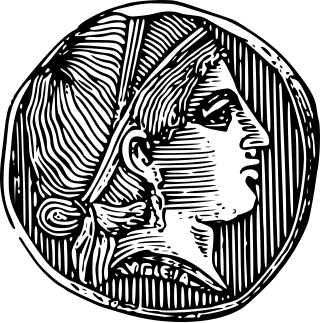
Dresden is the capital city of the German state of Saxony and its second most populous city after Leipzig. It is the 12th most populous city of Germany, the fourth largest by area, and the third most populous city in the area of former East Germany, after Berlin and Leipzig. Dresden's urban area comprises the towns of Freital, Pirna, Radebeul, Meissen, Coswig, Radeberg and Heidenau and has around 790,000 inhabitants. The Dresden metropolitan area has approximately 1.34 million inhabitants.

Gerhart Johann Robert Hauptmann was a German dramatist and novelist. He is counted among the most important promoters of literary naturalism, though he integrated other styles into his work as well. He received the Nobel Prize in Literature in 1912.

The International Office of Public Hygiene (OIPH), also known by its French name as the Office International d'Hygiène Publique (OIHP), was an international organization founded 9 December 1907 and based in Paris, France. It merged into the World Health Organization in 1946.

Hans Unger was a German painter who was, during his lifetime, a highly respected Art Nouveau artist. His popularity did not survive the change in the cultural climate in Germany after World War I, however, and after his death he was soon forgotten. However, in the 1980s interest in his work revived, and a grand retrospective exhibition in 1997 in the City Museum in Freital, Germany, duly restored his reputation as one of the masters of the Dresden art scene around 1910.

The Bulletin of the World Health Organization is a monthly public health journal published by the World Health Organization that was established in 1948. Articles are published in English and abstracts are available in Arabic, Chinese, English, French, Russian, and Spanish. According to the Journal Citation Reports, the journal has a 2022 impact factor of 11.1, ranking it 12th out of 207 journals in the category "Public, Environmental & Occupational Health".

Rudolf-Harbig-Stadion is a stadium in Dresden, Saxony, Germany. It is named after athlete Rudolf Harbig and is the current home of Dynamo Dresden. It also hosts fixtures of the German national team on an irregular basis since 1911. The stadium also hosts events outside association football, most notably as the home of the Dresden Monarchs American football team that play in the German Football League. Sports facilities have existed on the site of the stadium, the Güntzwiesen, since 1874.

Will Lammert was a German sculptor. In 1959 he was posthumously awarded the National Prize of the German Democratic Republic.

The German Hygiene Museum is a medical museum in Dresden, Germany. It conceives itself today as a "forum for science, culture and society". It is a popular venue for events and exhibitions, and is among the most visited museums in Dresden, with around 280,000 visitors per year.
The Pan American Journal of Public Health is a peer-reviewed open-access public health journal covering research and case studies on issues of public health significance, mainly in areas related to national and local health systems, to improve the health of the peoples of the Americas. The journal is published monthly by the Pan American Health Organization, a regional office of the World Health Organization. Articles are published in English, Portuguese, and Spanish.

Karl Albiker was a German sculptor, lithographer and teacher of fine arts. Albiker studied with Auguste Rodin in Paris. From 1919 to 1945 he was a professor at the Dresden Academy of Fine Arts. His monumental statues, like those of Georg Kolbe, reflected National Socialist heroic realism. Albiker created the relay racers for Berlin's Reich Sports Field and various war monuments, including those in Karlsruhe, Freiburg im Breisgau, and Greiz.
Berthold Müller-Oerlinghausen was a German sculptor.

The Stadtmuseum Gütersloh is a museum in Gütersloh, Germany, dealing with the city's history. Under the auspices of Gütersloh's association for local history it accommodates – beside exhibits to Gütersloh's local history – two exhibitions referring to the history of medicine and the industrial history. Every year about five to seven special exhibitions about local topics respectively travelling exhibitions take place in addition to these three permanent exhibitions. The medical-historic collection – the flagship of the museum – was granted a special prize of the European Museum of the Year Award in 1990. A desk of the Nobel Prize winner Robert Koch and an iron lung are some of the most important exhibits.
Samuel Frederick Hildebrand was an American ichthyologist.

Martin Roth was a German museum director. He was the director general of the Dresden State Art Collections from 2001 to 2011 and the director of the Victoria and Albert Museum in London, UK, from 2011 to 2016.

Albert Tafel was a German geographer, medical doctor and explorer. Prof. Dr. med. Albert Tafel was the son of Emil Otto Tafel, architect (Oberbaurat) and Professor at the School of Architecture (Baugewerbeschule) in Stuttgart, and his wife Lina, née Reuchlin.

Werner Spalteholz was a German anatomist.
Hildegard Reinhardt is a German translator and art historian.

Max Lingner was a German painter, graphic artist, communist, and resistance fighter against the Nazi regime.
Joshua Bloch was a Lithuanian-born American rabbi and librarian.













